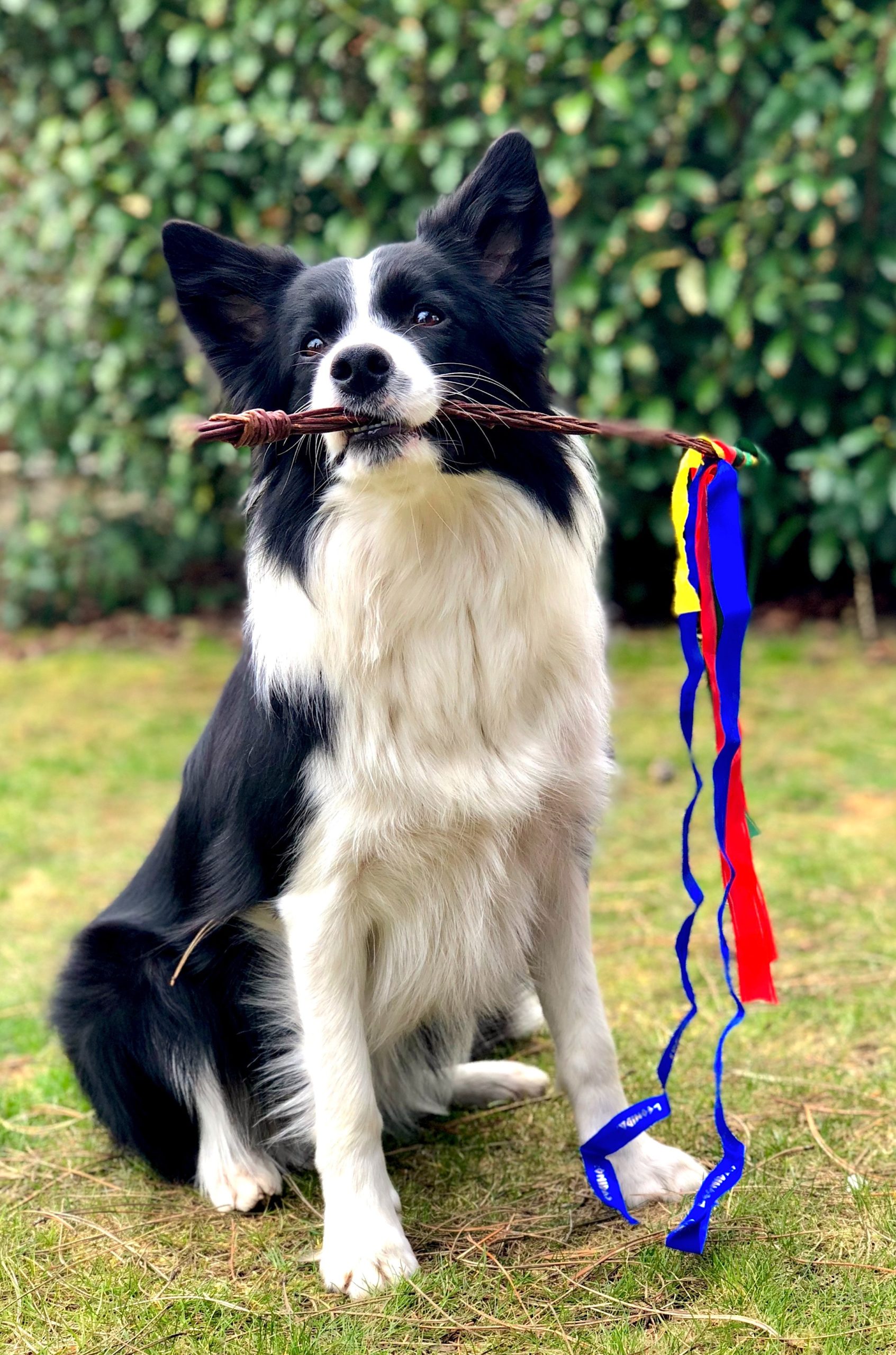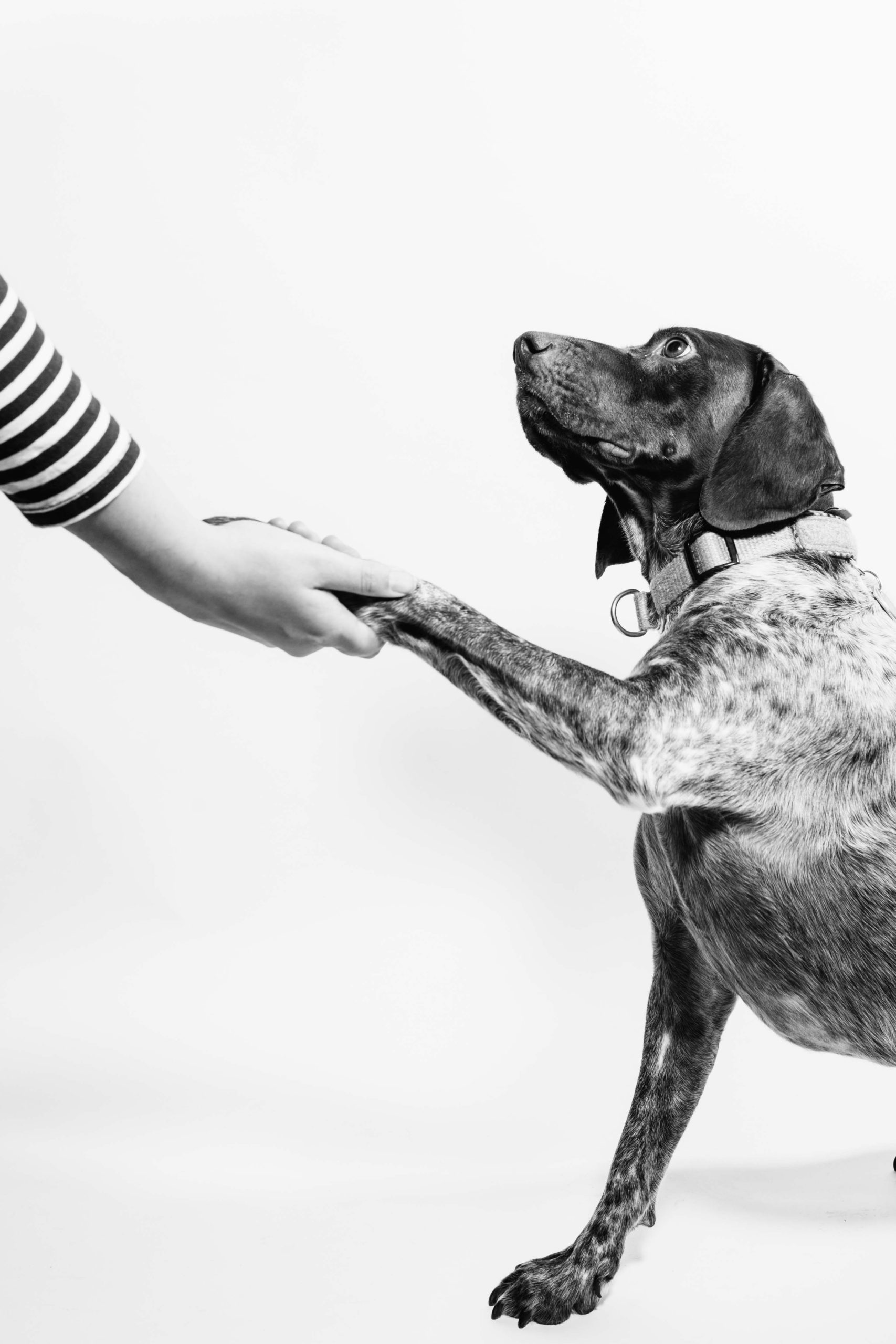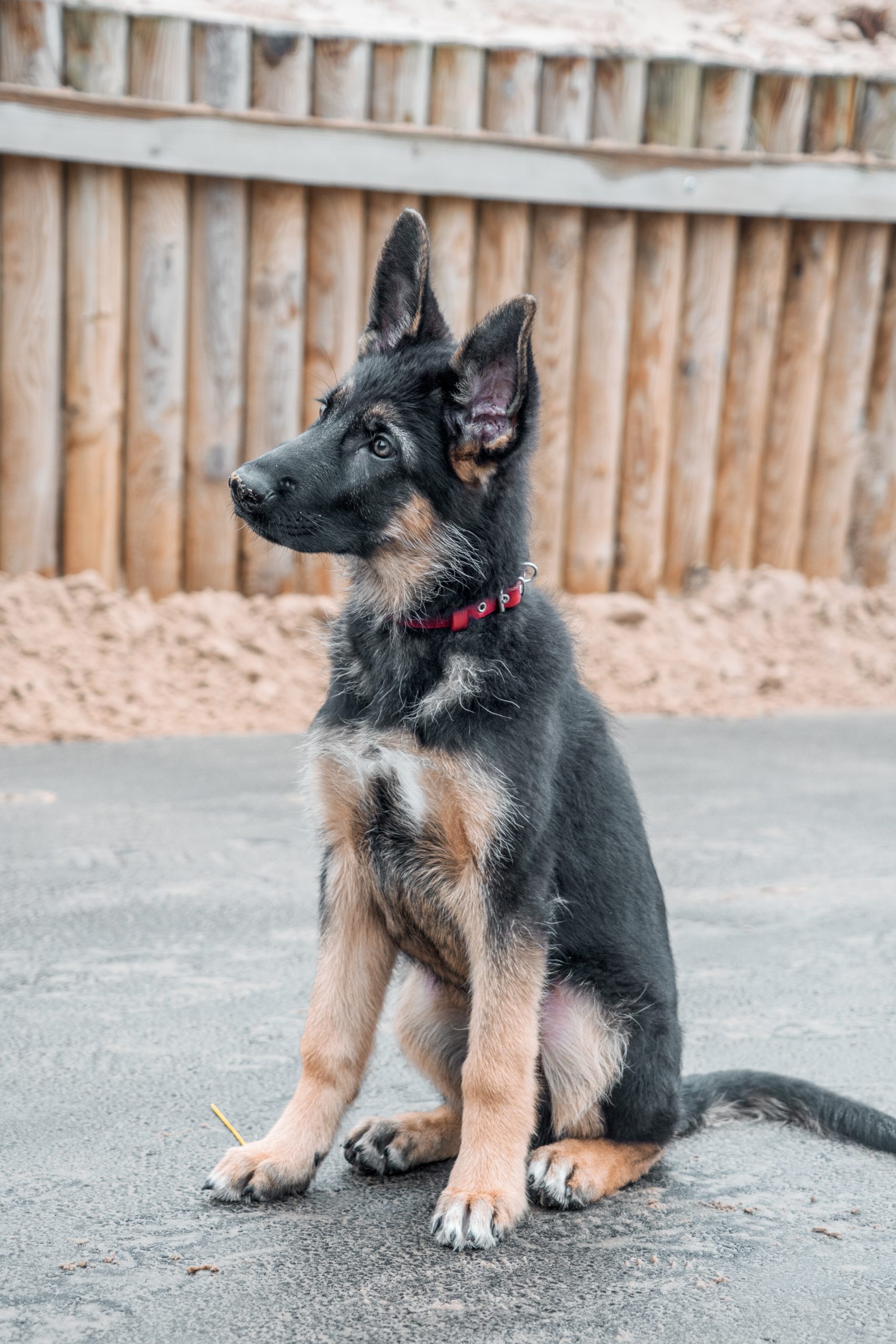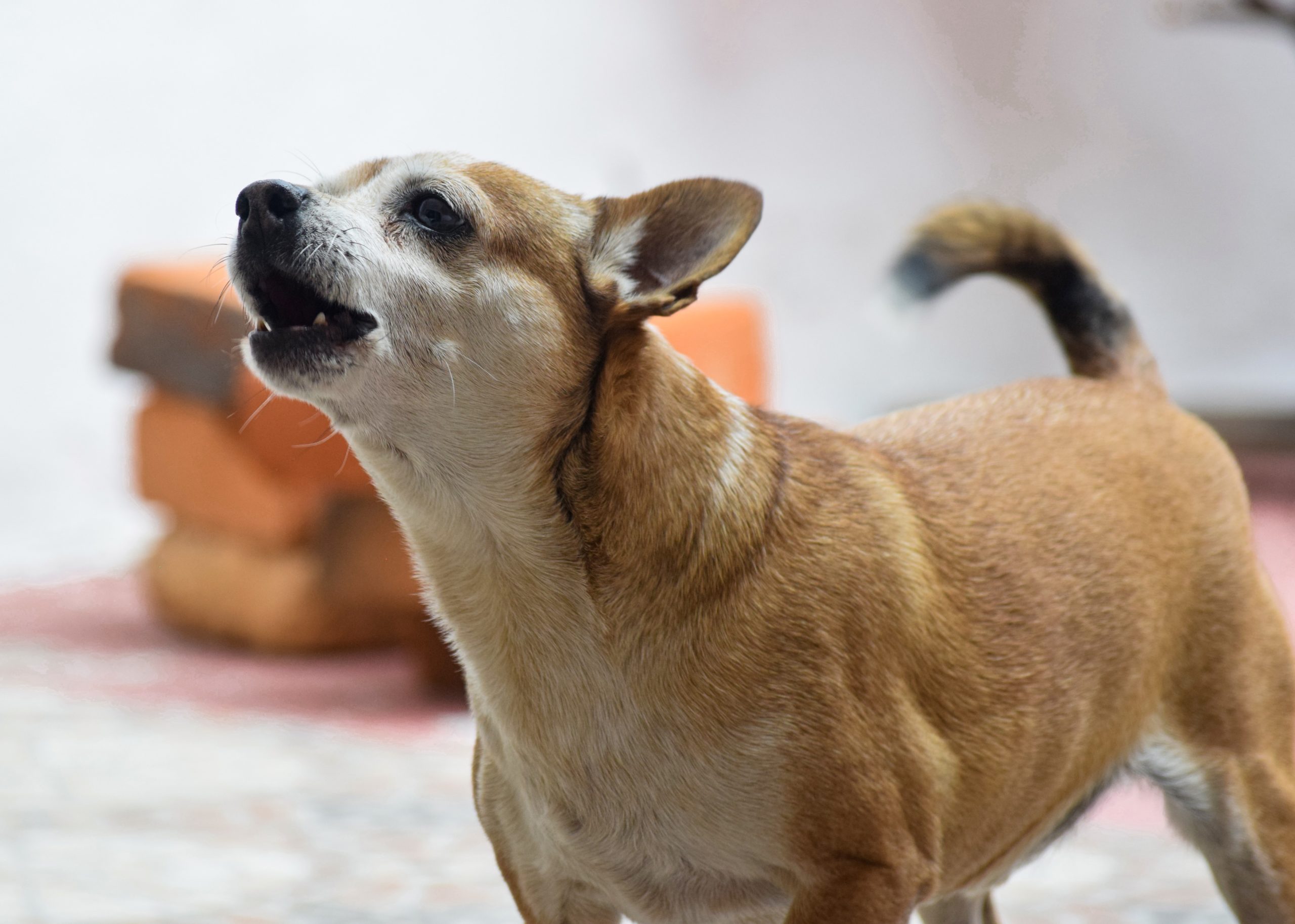Training a puppy can be an exciting and rewarding experience, but it also comes with its share of challenges. It’s essential to understand the basic principles of puppy training, such as positive reinforcement techniques, consistency, and socialization.
In this blog post, we’ll guide you through simple steps for effectively training your furry companion while addressing common difficulties that may arise along the way.
Understanding Puppy Training
Puppy training is crucial for their development and should begin as early as possible, teaching basic commands such as sit and stay.
Importance Of Puppy Training
Puppy training is a crucial aspect of responsible dog ownership, as it sets the foundation for a lifetime of good behavior and companionship.
A well-trained puppy not only creates a harmonious living environment but also helps reduce the likelihood of behavioral issues down the line. For example, housebreaking your pup early on minimizes indoor accidents while teaching basic obedience commands such as “sit,” “stay,” and “come” paves the way for effective control during off-leash activities or in potentially dangerous situations.
Additionally, proper socialization allows your dog to confidently interact with humans and other animals without fear or aggression.
Basic Training Commands
Basic training commands are essential for teaching your puppy obedience and proper behavior. Here are some of the most important commands every dog owner should teach their furry friend:
- Sit: This command is usually the first one taught to puppies as it sets the foundation for other commands.
- Stay: This command teaches your puppy to remain in a specific position until released.
- Come: This command is crucial for safety reasons and teaching your puppy to come back to you when called.
- Down: This command teaches your puppy to lie down on command, which can be useful in certain situations such as when visitors come over.
- Off: This command helps prevent jumping on people or furniture.
- Heel: This command teaches your puppy to walk beside you without pulling on the leash.
These basic commands will help strengthen communication between you and your dog while also promoting good behavior and obedience. Remember to use positive reinforcement techniques and consistency in training.
Age To Begin Training
It is important to start training your puppy as early as possible. Typically, you can begin training a puppy when they are around 8 weeks old.
Starting at this young age helps form good habits early on before any undesirable behaviors become entrenched. However, every puppy develops differently so it’s never too late to start training your dog whether they’re a few months or even years old.
The key is to be patient, and consistent, and use positive reinforcement techniques such as treats or praise when your pup performs well.
Essential Steps For Effective Puppy Training
To effectively train a puppy, it is essential to use positive reinforcement techniques, be consistent with training sessions, have patience and perseverance when correcting behaviors, establish a routine that includes setting rules and boundaries, and regularly reinforce good behavior.
Positive Reinforcement Techniques
Positive reinforcement is one of the most effective techniques for training your puppy. It involves rewarding good behavior instead of punishing bad behavior. Here are some positive reinforcement techniques to try with your puppy:
- Use treats: Reward your puppy with small, bite-sized treats when they exhibit a desired behavior, such as sitting or staying.
- Use toys: Use playtime with their favorite toy as a reward for good behavior.
- Use praise: Give verbal praise and physical affection, like pats and scratches when your puppy follows a command.
- Consistency: Be consistent with your rewards so that your puppy knows what you expect from them.
- Timing: Reward your dog immediately when they exhibit a desired behavior, so they know what the reward is for.
- Fade out treats over time: Slowly phase out treat rewards as your puppy becomes more consistent in performing the desired behaviors.
With patience and consistency, using positive reinforcement techniques can help create better communication between you and your puppy while creating an overall positive experience for them.
Consistency In Training
Consistency is key when it comes to training a puppy. Dogs respond well to routine and repetition, so it’s important to keep things consistent throughout their training.
It can be tempting to let certain behaviors slide when you’re not in the mood to train or enforce rules, but this can lead to confusion for your pup. They won’t understand why they were rewarded one day for jumping up on you but scolded the next day for doing the same thing.
Patience And Perseverance
Effective puppy training requires patience and perseverance. Every dog learns at their own pace, and it’s important to keep this in mind during the process.
Owners should also maintain consistency in their training methods and reward systems, using positive reinforcement techniques. This means rewarding the behavior you want to encourage rather than punishing undesirable behavior.
Remember that successful puppy training takes time and effort. Don’t get discouraged if your pup doesn’t catch on immediately – continue practicing with patience and perseverance until they master the desired commands or behaviors.
Establishing A Routine
Establishing a routine is crucial when it comes to training your puppy. Here are some tips on how to establish a routine for your furry friend:
- Create a feeding schedule – Feed your puppy at the same time every day to help them develop a routine and prevent stomach issues.
- Set a potty break schedule – Take your puppy outside for potty breaks at regular intervals, such as first thing in the morning, after meals, and before bedtime.
- Schedule exercise sessions – Puppies need regular exercise to stay healthy and happy. Plan daily walks or playtime sessions with your puppy.
- Consistent training sessions – Set aside time each day to work on training exercises with your puppy. This will teach them basic commands and reinforce good behavior.
- Establish sleep routines – Create a cozy sleeping area for your puppy and stick to consistent bedtimes.
By establishing a routine for your puppy, you will help them learn what is expected of them and make their life more structured and predictable. Remember, consistency is key!
Setting Rules And Boundaries
Establishing rules and boundaries is an essential part of your puppy’s training. Here are some tips to help you:
- Be consistent in enforcing the rules and boundaries you set.
- Use positive reinforcement to reward good behavior and discourage bad behavior.
- Keep commands simple and consistent.
- Establish a routine for feeding, exercise, and potty breaks.
- Set boundaries for where your puppy can go in the house and what they can chew on.
- Encourage appropriate playtime while discouraging biting or aggressive behavior.
- Provide plenty of toys and distractions to prevent destructive behavior.
By setting clear rules and boundaries for your puppy, you are helping them establish good habits that will last a lifetime.
Addressing Common Challenges In Puppy Training
To tackle common challenges in puppy training such as house training, barking and chewing, socialization, and problem behaviors, it is crucial to remain consistent with positive reinforcement techniques and establish a routine that sets clear rules and boundaries.
House Training
House training is one of the most critical parts of puppy training. Potty accidents can be frustrating and messy, so it’s essential to teach your puppy where they should do their business. Here are some steps you can take to house-train your puppy effectively:
- Establish a routine: Take your puppy outside frequently, especially after meals, naps, and playtime.
- Choose a designated spot: Pick a specific area in your yard or a designated place for pee pads indoors.
- Use positive reinforcement: Praise and reward your puppy when they go potty in the right spot.
- Consistency is key: Stick to the routine and take your puppy out at regular intervals.
- Be patient and persistent: It takes time for puppies to learn where they should go potty.
- Watch for signs: Look out for signs that your puppy needs to go, such as sniffing around or circling.
- Clean up accidents thoroughly: To avoid repeat offenses, clean messes with an enzymatic cleaner designed for pet accidents.
By following these steps consistently, you can house-train your puppy successfully in no time. Remember always to use positive reinforcement techniques and be patient with your furry friend as he learns this new skill!
Barking And Chewing
Excessive barking and destructive chewing are common behaviors in puppies that often cause frustration for their owners. Here are some tips to help you address these issues:
- Distract your puppy with a toy or treat when they begin to chew on something they shouldn’t.
- Provide plenty of toys and chews that are appropriate for your puppy’s age and breed to satisfy their chewing needs.
- Teach your puppy “quiet” command using positive reinforcement techniques.
- Avoid rewarding your puppy’s barking behavior by giving them attention or treats when they bark.
- Provide plenty of physical exercises and mental stimulation to reduce the boredom that can lead to excessive barking and chewing.
- Use a crate or a playpen to limit access to areas where your puppy may engage in destructive behavior when you cannot supervise them closely.
- Seek the advice of a professional dog trainer if the behavior persists or becomes unmanageable.
You can address unwanted behaviors such as barking and chewing and create a stronger bond with your furry friend.
Socialization
Socializing a puppy with other dogs and people is essential in ensuring they grow up to be well-behaved and friendly. Exposing your puppy to different environments, sounds, and smells helps them become comfortable with new situations, preventing fear or aggression towards unfamiliar things.
It’s also important for puppies to meet new people of all ages, genders, and ethnicities. This helps prevent any nervousness or fear when encountering strangers. Encourage interactions with family members, neighbors, and visitors to your home.
The puppy must have all necessary vaccinations before they’re exposed to other dogs or public places — this prevents contracting diseases such as parvovirus.
Addressing Problem Behaviors
Problem behaviors in puppies can be frustrating for dog owners. However, with the right strategies and techniques, these behaviors can be addressed effectively. Here are some essential steps to help address problem behaviors in your puppy:
- Identify the behavior: The first step is to identify what specific behavior you want to address. Common problem behaviors include chewing, biting, digging, jumping, and excessive barking.
- Understand why it’s happening: Once you have identified the behavior, try to understand why your puppy is exhibiting it. Is it an instinct or a response to a particular stimulus? Understanding the reason behind the behavior will help you address it more effectively.
- Use positive reinforcement: Punishing your puppy for bad behavior can actually reinforce the behavior as they may associate attention with what they did wrong. Instead, use positive reinforcement by rewarding good behavior with treats or verbal praise.
- Consistency is key: Consistency is crucial in correcting problem behaviors in puppies. Make sure everyone in the household is on board with addressing the problematic behavior and uses consistent commands.
- Redirecting attention: If your puppy is exhibiting problem behaviors due to boredom or pent-up energy, redirect their attention towards an appropriate activity such as playing fetch or walking.
- Seek professional help if necessary: If despite all efforts, your puppy’s problem behaviors persist or worsen over time, seek professional help from a veterinarian or a professional dog trainer.
Remember that each puppy is unique and may require different approaches when it comes to addressing problem behaviors.
Advanced Training Techniques And Final Tips
In this section, you’ll learn how to take your puppy’s training to the next level with advanced techniques like crate training and teaching tricks. In case you feel that there is no progress even after extensive research, we also recommend seeking professional help for that extra boost in your training progress. Additionally, we’ll share tips for socializing your pup and strengthening the bond between you two.
Crate Training
Crate training is an effective method for teaching puppies good behavior and making them comfortable in their own space. Here are some essential tips to follow when crate-training your puppy:
- Introduce the Crate: Introduce the crate to your puppy gradually by placing it in a common area and using positive reinforcement such as treats and toys to encourage your puppy to enter.
- Make It Comfortable: Add soft bedding and toys to make the crate a comfortable and inviting place for your puppy.
- Don’t Use It As Punishment: Never use the crate as a form of punishment, this could create negative associations towards it.
- Start Slowly: Begin with short periods of confinement in the crate, gradually increasing the time as your puppy gets more comfortable.
- Use Positive Reinforcement: Reward your puppy every time they enter the crate on its own and stay inside without whining or crying.
- Monitor Your Puppy’s Behavior: Keep an eye on your puppy’s behavior while they are in the crate and take them out if they show signs of distress or anxiety.
- Don’t Leave Your Puppy Alone For Too Long: Puppies should not be left alone in a crate for extended periods of time, as this can lead to separation anxiety.
- Get Them Used To Leaving The Crate: Gradually get your puppy used to leaving the crate by opening the door, but not letting them out until you give permission.
By following these steps, you can successfully train your puppy to love its crate and feel safe and secure within it.
Teaching Tricks
Teaching tricks is an excellent way to strengthen the bond and trust between you and your puppy. Here are some tips for effective trick training:
- Start with basic commands: Teach your puppy basic commands such as sitting, staying, and coming before moving on to more advanced tricks.
- Use positive reinforcement: Reward-based training is the most effective way to teach tricks. Praise and treats can motivate your puppy to learn quickly.
- Keep sessions short: Puppies have a short attention span, so keep training sessions brief and frequent throughout the day.
- Use a clicker: Clicker training can help your puppy associate a specific behavior with a reward.
- Be patient: Some puppies will learn quickly while others may take longer. Stay calm and be patient, and don’t give up!
- Practice regularly: Consistent practice is important for learning new tricks. Make sure to practice every day until your puppy masters the trick.
- Have fun!: Trick training should be a fun activity for both you and your puppy. Enjoy the process of learning together!
Remember, teaching tricks is not only about entertainment – it also helps stimulate your puppy’s brain and promotes good behavior.
Socializing With Other Dogs And People
Socialization is a crucial part of puppy training. It helps the puppy learn how to interact with other dogs and people, which is essential for their growth and development. Here are some tips on how to socialize your puppy:
- Start early: Introduce your puppy to new experiences as soon as possible, starting with simple things like meeting new people and going on short walks.
- Gradually increase exposure: Build up exposure slowly, making sure your puppy is comfortable at each stage before moving on to the next.
- Positive reinforcement: Use positive reinforcement techniques such as treats or praise when your puppy interacts positively with new people or dogs.
- Puppy classes: Consider enrolling your puppy in a puppy class where they can socialize with other puppies in a controlled environment.
- Safe interactions: Always make sure that interactions with other dogs and people are safe and supervised, especially in the early stages of socialization.
- Consistency: Make sure to consistently expose your puppy to different environments and situations to help them become well-rounded and confident.
Remember, socializing your puppy is an ongoing process that should continue throughout their life.
Strengthening Bond And Trust
Building a strong bond and trust with your puppy is crucial in creating a healthy relationship. Spend quality time with your furry friend by playing games, going on walks, or cuddling up together.
It’s essential to create a safe and comfortable environment for your puppy where they feel loved and secure. Puppies thrive on routine, so providing consistent training sessions and clear expectations are key to building trust.
Remember to always provide gentle guidance when necessary and never use physical punishment as it can damage the relationship between you and your pup.
Conclusion
In conclusion, training a puppy requires patience, consistency, and positive reinforcement techniques. Establishing a routine and setting rules and boundaries are essential for successful training.
Socializing with other dogs and people is crucial to prevent problem behaviors such as barking and chewing.
It’s important to keep in mind that puppies have different learning speed, so patience is key to ensure that they learn at their own pace. Reward-based training using treats or praise can help make the process more enjoyable for both the owner and the puppy.
Remember that old dogs can still learn new tricks too! So it’s never too late to start training your furry friend.
FAQs:
1. What is the best age to start training a puppy?
Puppies should begin basic obedience training as early as 8 weeks old when they are old enough to comprehend simple commands and establish good habits that will stick with them as they grow older.
2. What are some effective techniques for potty training a puppy?
Puppy owners can use a crate or outdoor potty training methods, which involve establishing regular feeding schedules, frequent monitoring of elimination patterns and therefore building consistency in routine.
3. How long does it take to teach a puppy new commands?
The speed at which puppies learn varies based on their background but generally speaking – repetition is key! It’s important not to overwhelm the pup with too much information at once, breaking down tasks into small chunks and giving high-value rewards could be helpful here.
4. Should I consider professional help when training my pup?
If you’re struggling to train your pet effectively or not sure where exactly they require assistance – enlisting the services of an experienced trainer could provide positive results quickly by teaching owners various methods proven successful in modifying behavior problems while keeping safety a top priority at all times.



